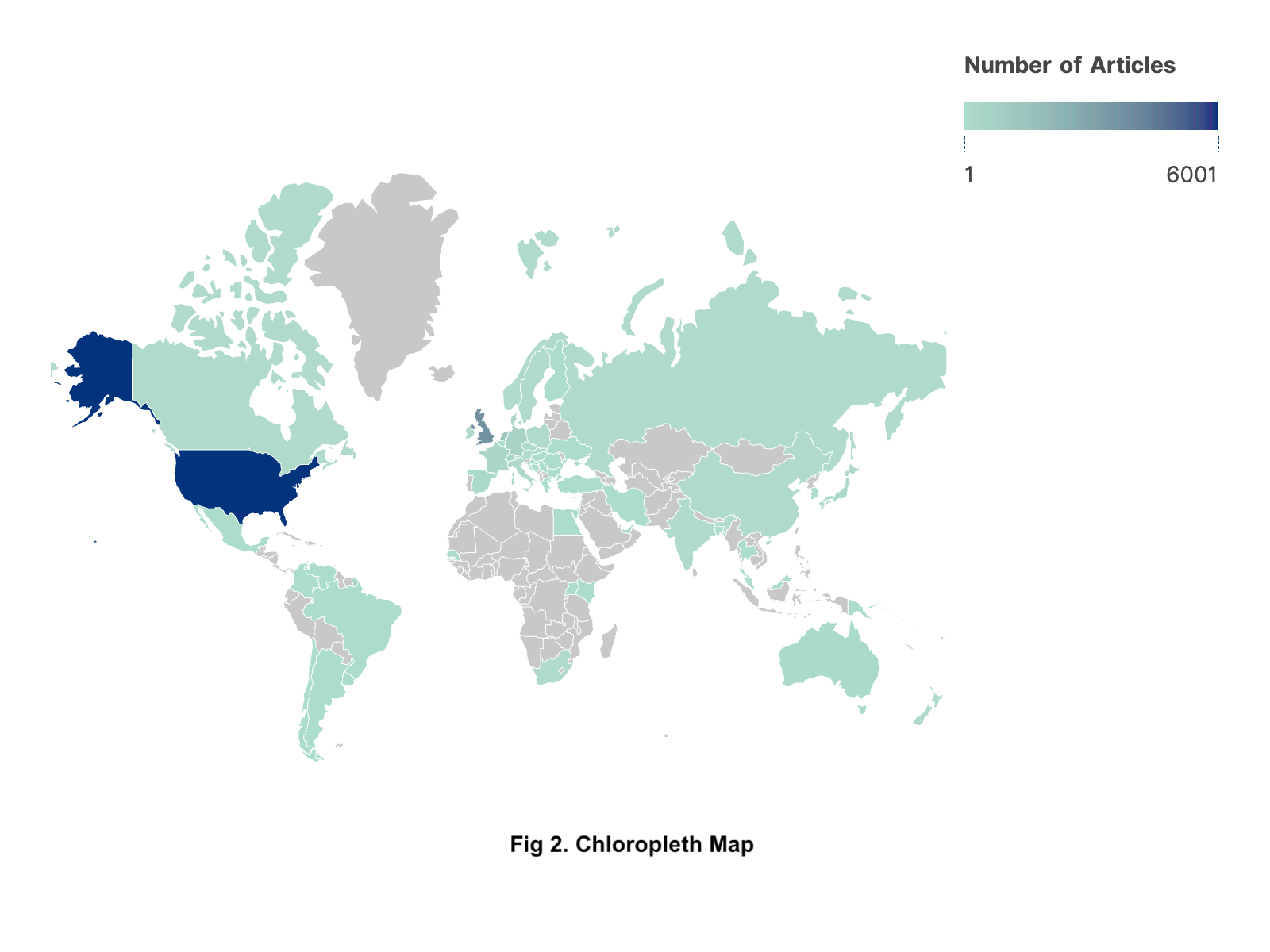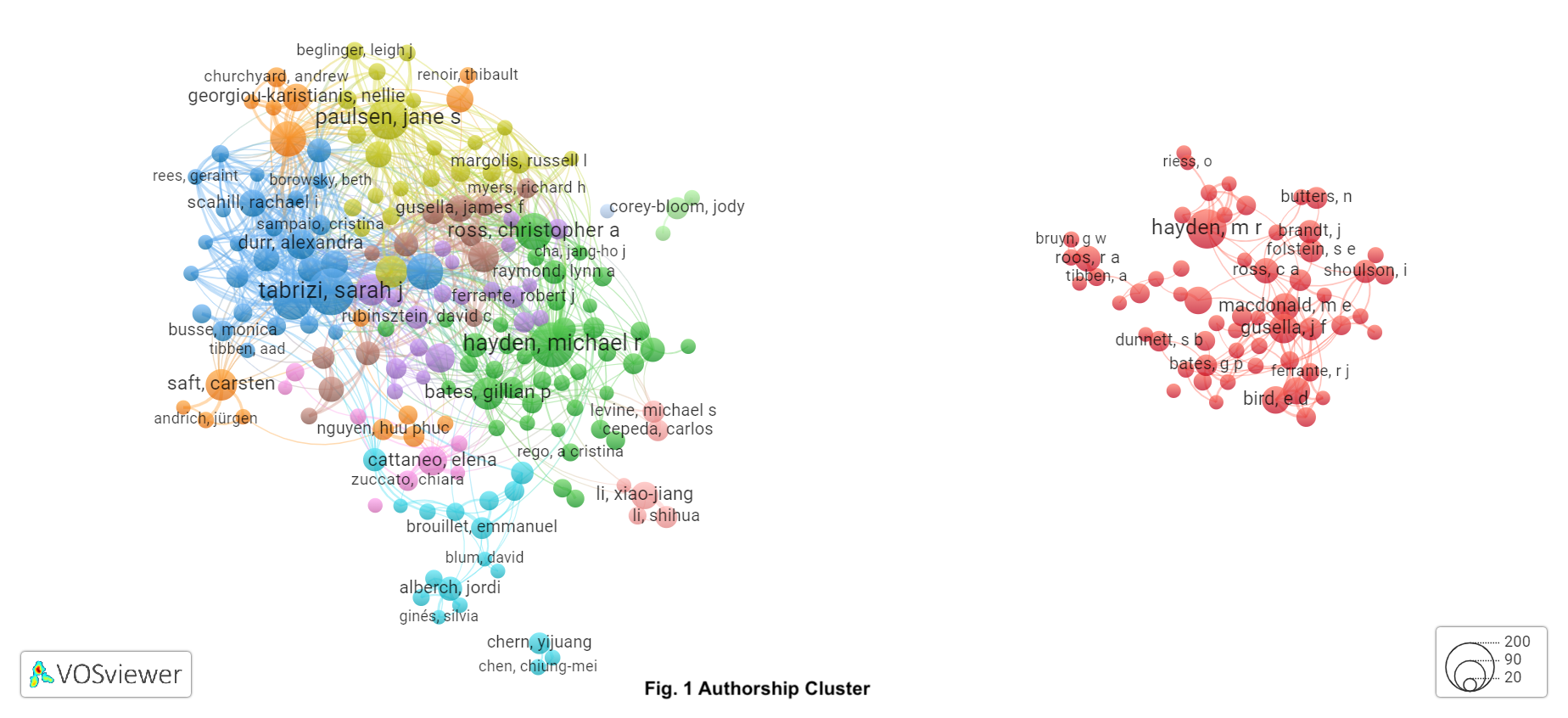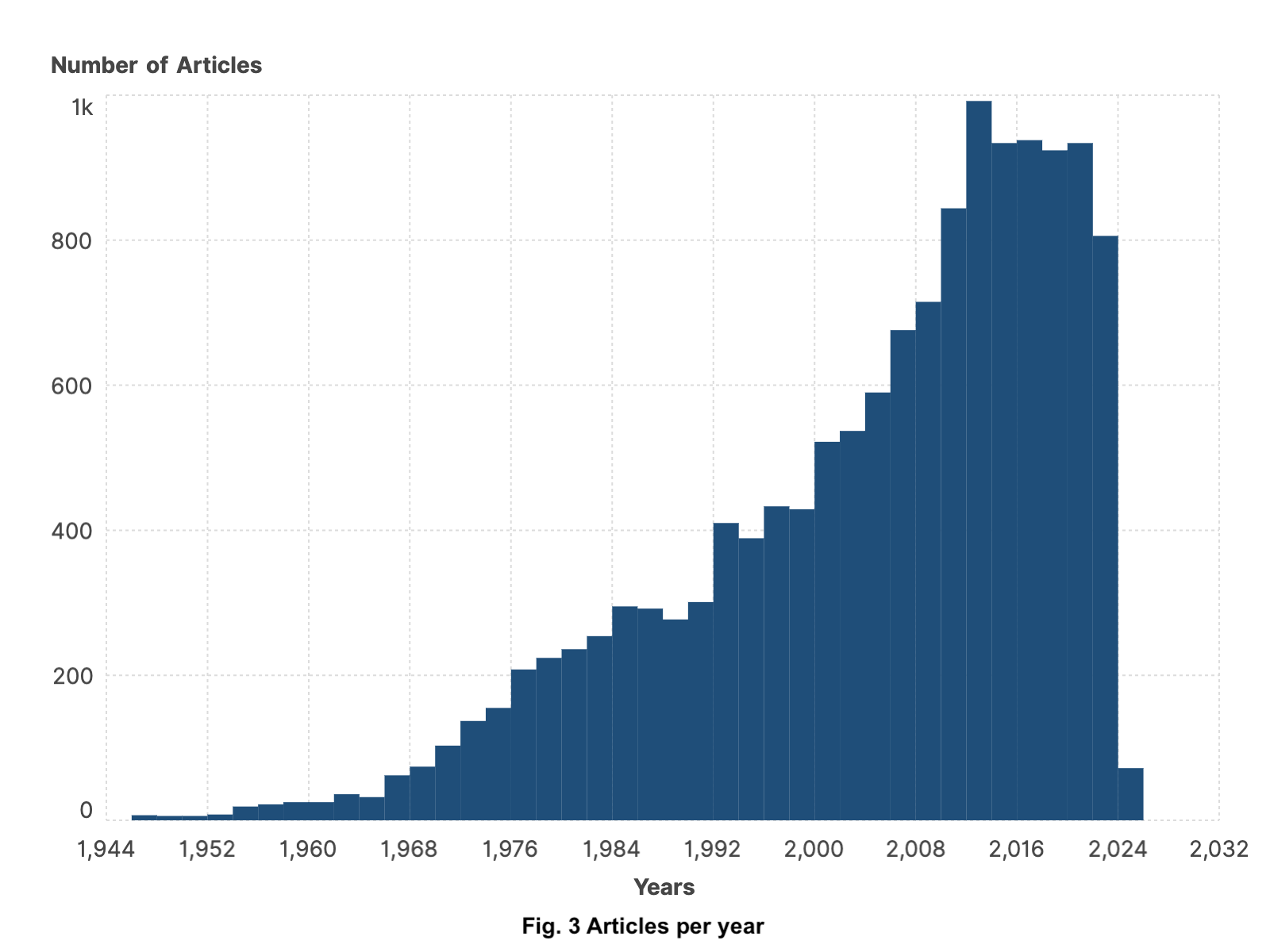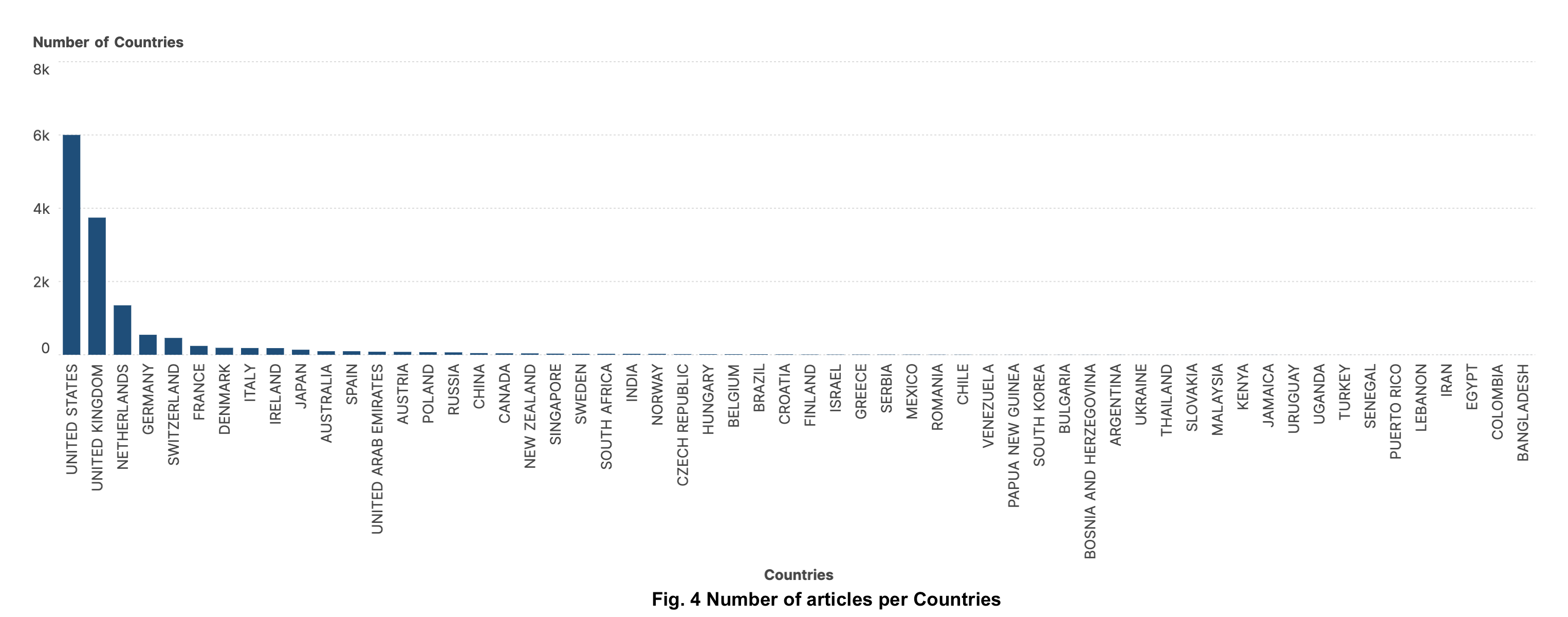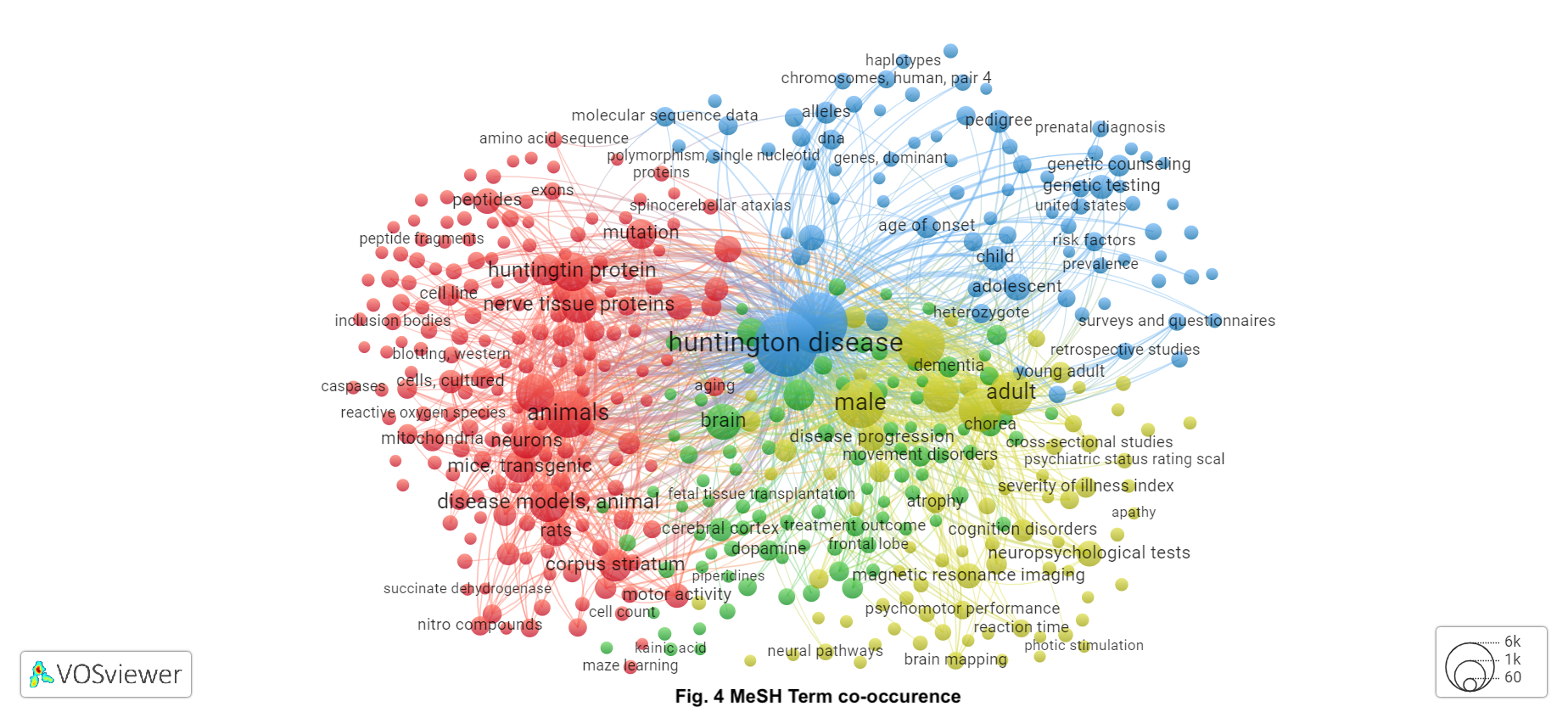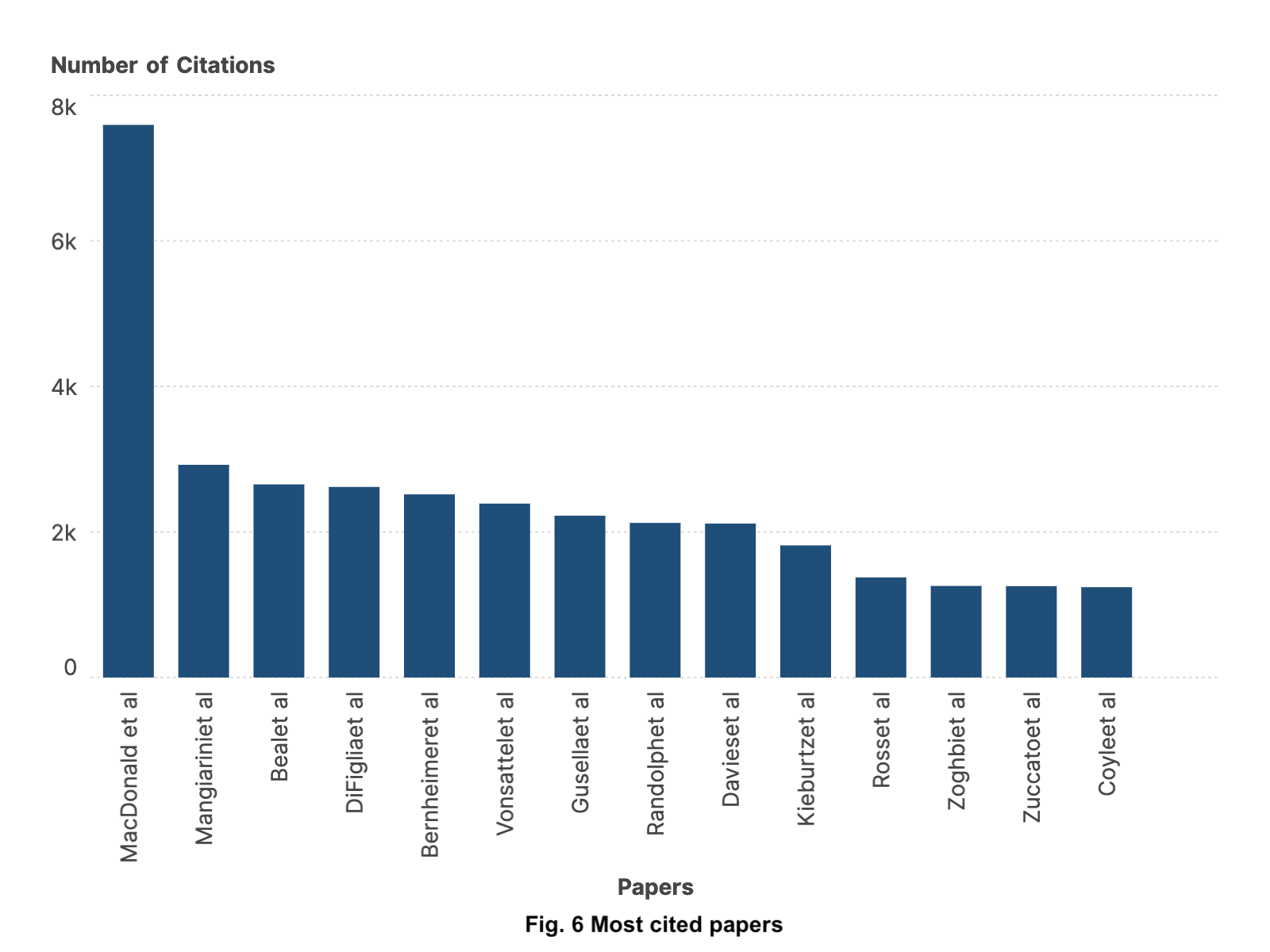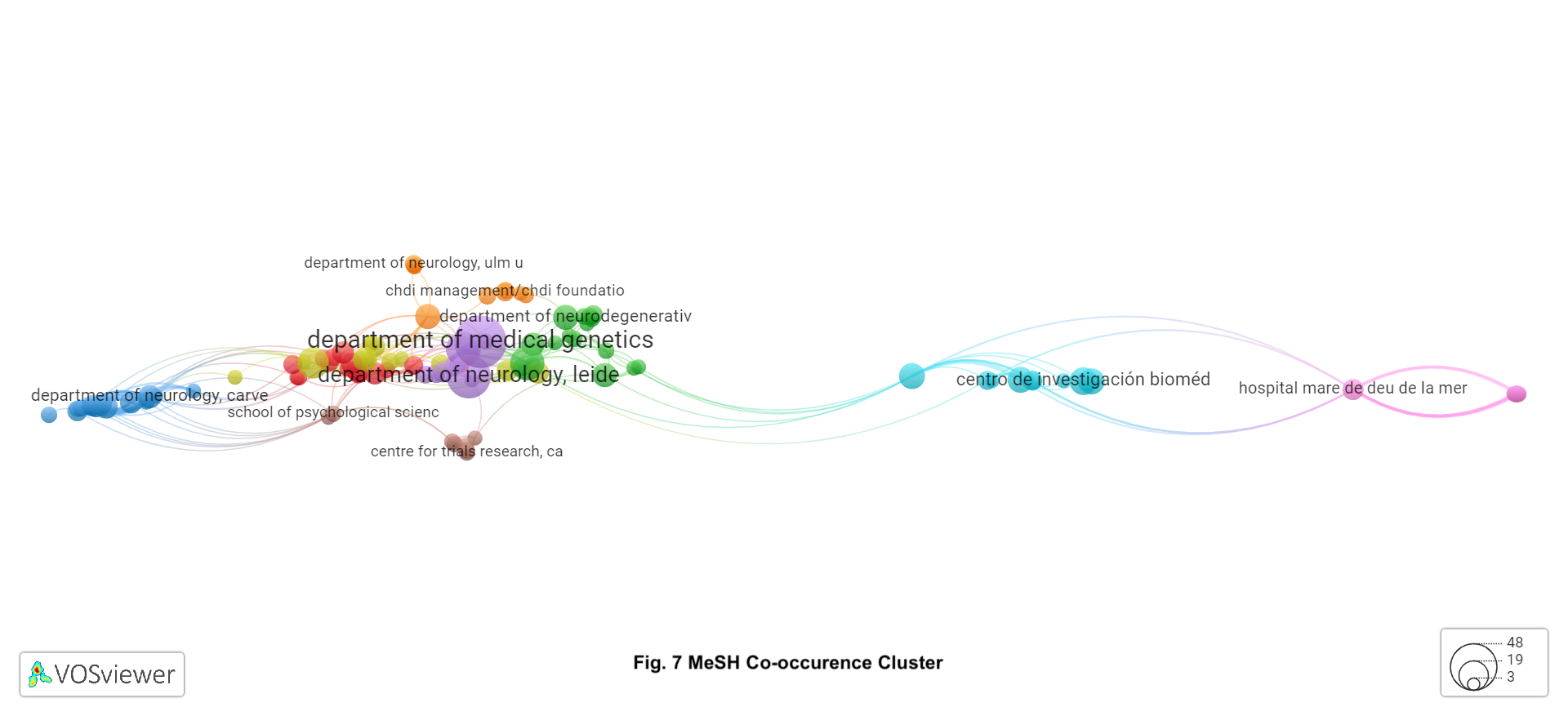Category: Huntington's Disease
Objective: To map the Huntington’s Disease research landscape, identifying key trends, gaps, and the most impactful studies to guide future research directions and therapeutic strategies.
Background: A uncommon hereditary condition called Huntington’s disease results in the gradual degeneration of neurons. In order to prepare the way for novel therapies and a deeper comprehension of the illness’s intricate biology, this study highlights critical findings, developing therapeutic approaches, and areas requiring more investigation. It also analyzes research gaps and trends related to Huntington’s disease.
Method: A comprehensive bibliometric analysis was conducted on all the articles having ‘Huntington disease’ as of their MeSH terms. VOSviewer was used to visualise the data, allowing for the investigation of trends and patterns. Citationchaser.org was used to retrieve data related to the number of citations.
Results: The total number of articles included in the analysis was 13960. Most articles on the topic are available in English. In the research landscape, the United States of America, has the highest number of papers published. The journal of Huntington has the highest number of studies. A total of 945 case reports, 131 randomised control trials, 77 systematic reviews and 2400 reviews were done on the topic. The most notable article with the most citations is by MacDonald et al having 7592 citations. Some of the most notable authors in this field with the most published papers are Tabrizi, and Michael R.
All the MeSH terms present in the included articles were divided into convenient categories and the counts were analysed. This analysis revealed that the most prevalent MeSH terms highlight the demographic spread of Huntingtons, showing a higher incidence in males than females, across all age groups, with notable focus on human studies over animal models. Biochemical aspects, particularly huntingtin and nerve tissue proteins, alongside brain structure, like the corpus striatum, are particularly of more interest. Pharmacological interventions emphasise neuroprotective strategies.
Conclusion: This analysis provides insights into Huntington research, highlighting focus areas, methodological trends, and avenues for future exploration. Synthesising diverse findings, it gives insight into the trending topics of the field.
Chloropleth Map
Author co-coccurence cluster
Year wise number of Articles
Country wise count of articles
Co-occurence cluster of MeSH terms
Most cited articles
Organisation co-occurence cluster
To cite this abstract in AMA style:
S. Khankar, T. Lalotra, A. Subhedar, S. Joshi, S. Mast, A. Bhonsale. Deciphering the Huntington’s Disease Research Landscape: A Comprehensive Bibliometric and Trend Analysis [abstract]. Mov Disord. 2024; 39 (suppl 1). https://www.mdsabstracts.org/abstract/deciphering-the-huntingtons-disease-research-landscape-a-comprehensive-bibliometric-and-trend-analysis/. Accessed April 18, 2025.« Back to 2024 International Congress
MDS Abstracts - https://www.mdsabstracts.org/abstract/deciphering-the-huntingtons-disease-research-landscape-a-comprehensive-bibliometric-and-trend-analysis/

